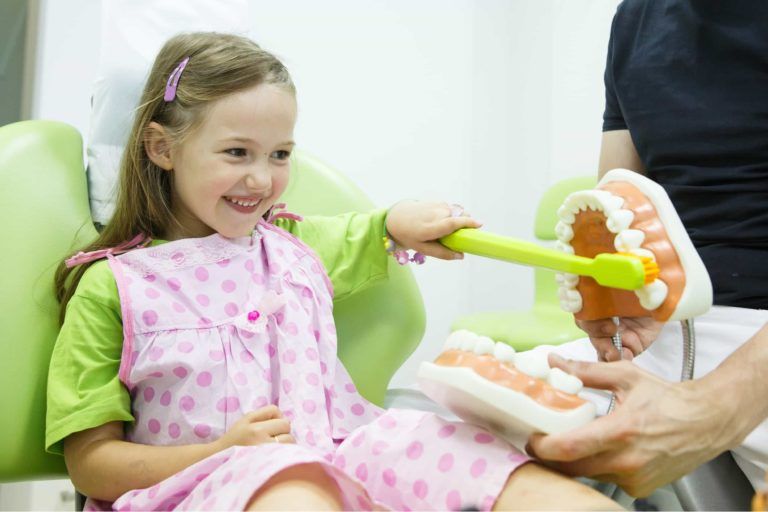
Cavity Prevention - Help Keep Decay Away
Your child should have all 20 primary (baby) teeth around the age of three. Keep in mind that research shows that approximately 80% of children who remain cavity-free at this age remain cavity-free when the adult teeth begin to erupt into the mouth.
If children at this age want to brush their own teeth, let them try and encourage them. It’s good that they’re showing initiative in their dental healthcare. To promote brushing as a habit, brush your own teeth at the same time as your child brushes and give him / her lots of positive feedback. However, you should still brush afterward to make sure that all of the surfaces are clean. Kids will typically need supervision with brushing until they’re eight or nine years old. Studies have found that manual toothbrushes and are just effective as powered ones. But if letting your kid use an electric or battery-operated one makes it easier for him / her to brush, go for it.
It is recommended that children ages 2 and above use fluoride toothpaste. Fluoride toothpaste is strongly suggested for most children, but especially those prone to tooth decay.
It is recommended that your child stop sucking habits (pacifier, thumb, etc.) by the age of three to prevent problems with their bite and facial development.
Based our experience with our children, we highly recommend this wonderful list of books to read with your children leading to your appointments with us:
Peppa Pig: Dentist Trip
Dora the Explorer: Show me your smile
The Berenstain Bears Visit the Dentist
Dr. Seuss The Tooth Book
The Tooth Book: A Guide to Healthy Teeth and Gums
The Guide to a Toddler's Diet
A balanced diet for kids is essential in building strong and healthy teeth and smiles. Apart from other important vitamins and minerals, your child’s meal should have plenty of calcium and Vitamin D and the right amount of fluoride. Calcium helps strengthen the bones, with Vitamin D increasing mineral absorption. Fluoride, on the other hand, offers protection against tooth decay.
Limiting sugar – which bacteria need in order to survive – is the number-one way to prevent cavities. It’s actually the frequency, not the total quantity of sugar consumption, that matters most. That’s because repeatedly exposing the teeth to sugar prevents saliva, the body’s natural tooth cleanser, from doing its job.
Starchy carbohydrates like crackers and cereal and sticky foods such as raisins can also promote decay.
Fruit juice (even diluted), as well as breast milk and formula, bathe the teeth in sugar. In fact, early dental caries “baby-bottle tooth decay” because it often occurs in children who drink milk or juice during the night – allowing sugar to sit on the teeth for 10 to 12 hours.
Did you know recent research shows cheese is one of the healthiest snacks for your child’s teeth? In addition to providing large amounts of much-needed calcium, cheese also does its part to fight cavities. Cheddar, Swiss, mozzarella, and Monterey jack all stimulate the body’s salivary glands to clear the mouth of debris and protect teeth from acids that weaken them. This means cheese disrupts the development of cavities, especially when eaten as a snack or at the end of a meal. Calcium and phosphorous found in cheese reduce or prevent decreases in the plaque’s ph level and work to re-mineralize the enamel of your child’s teeth.

